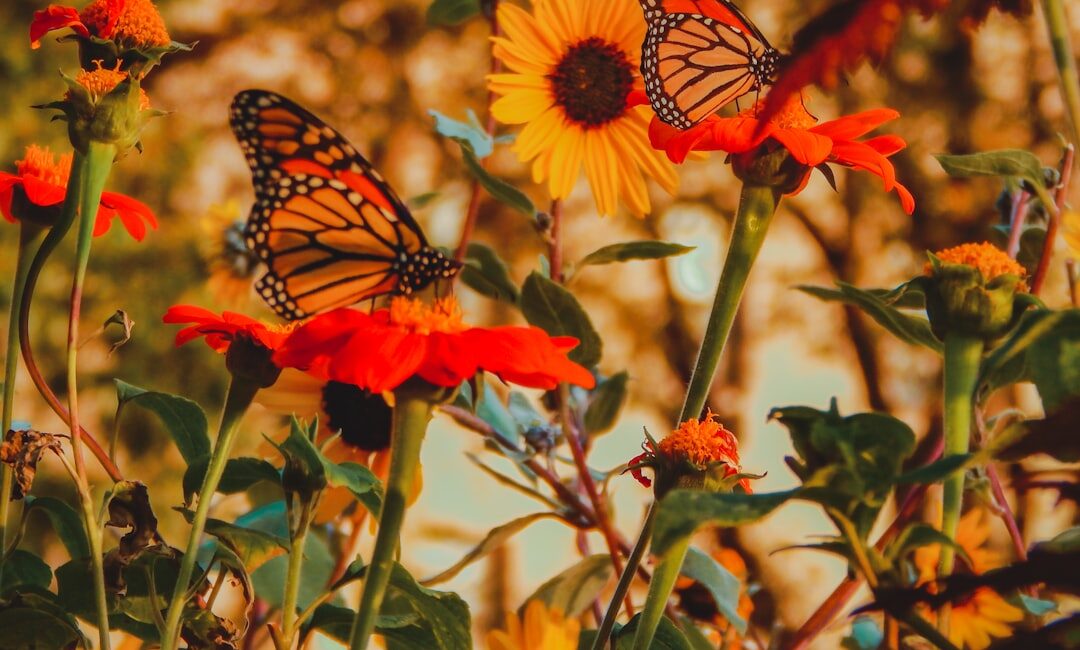What if a simple patch of flowers could transform a backyard into a living masterpiece? Butterflies, with their delicate wings and graceful movements, bring color and life to any garden. Designing a butterfly garden isn’t just about beauty—it’s about creating a sanctuary that supports these pollinators while offering a peaceful retreat for people. This article explores the key elements needed to attract butterflies, from selecting the right plants to providing shelter and water. Whether starting from scratch or enhancing an existing space, these practical tips will help craft a garden that thrives with fluttering visitors. Ready to turn an ordinary yard into a butterfly haven? Let’s begin.
Understanding Butterfly Needs

Butterflies are more than just beautiful visitors—they play a vital role in pollination and ecosystem health, making it essential to understand their needs before designing a garden. These delicate creatures rely on specific environmental conditions, such as access to nectar-rich flowers for adults and host plants for their larvae, to thrive. For example, monarch butterflies depend on milkweed for laying eggs, while swallowtails favor plants like parsley or dill. By recognizing these preferences, gardeners can create a habitat that not only attracts butterflies but also supports their entire life cycle. A well-planned butterfly garden begins with understanding these foundational requirements, ensuring a space where both pollinators and people can flourish.
Understanding the key aspects of butterfly needs is essential for creating a garden that truly supports these pollinators. Butterflies require nectar-rich flowering plants for sustenance, which provide the energy they need to fly and reproduce. Additionally, host plants are crucial as they serve as food sources for caterpillars, ensuring the next generation of butterflies. Shelter from wind and predators, as well as access to water and minerals, are also vital for their survival. By incorporating these elements, gardeners can create a habitat that not only attracts butterflies but also supports their entire life cycle, making the garden a thriving ecosystem for these delicate creatures.
Butterflies have specific needs beyond just nectar plants, including access to water, shelter, and host plants for their larvae. Providing shallow water sources, such as a birdbath with stones for perching, ensures they can stay hydrated. Additionally, incorporating features like tall grasses, shrubs, or rock piles offers protection from predators and harsh weather. Understanding these details helps create a balanced habitat where butterflies can thrive throughout their lifecycle. By addressing these essential requirements, gardeners can foster a welcoming environment that not only attracts butterflies but also supports their survival and reproduction, setting the stage for a flourishing butterfly garden.
Selecting Nectar-Rich Plants

Selecting nectar-rich plants is a foundational step in designing a butterfly garden, as these plants provide the essential fuel that butterflies need to thrive. Nectar, a sugary liquid produced by flowers, serves as the primary food source for adult butterflies, sustaining their energy for flight, mating, and migration. Certain plants are particularly adept at producing abundant nectar, making them irresistible to butterflies. For example, species like milkweed, coneflowers, and lantana are known to attract a variety of butterfly species due to their high nectar content. By incorporating these plants into a garden, one not only supports butterfly populations but also enhances the overall biodiversity of the space. Understanding the role of nectar-rich plants sets the stage for creating a vibrant and functional habitat for butterflies.
When selecting nectar-rich plants for a butterfly garden, it’s essential to focus on variety and accessibility. Butterflies are drawn to flowers that provide ample nectar and are easy to land on, such as those with flat or clustered blooms like zinnias, coneflowers, and black-eyed Susans. Incorporating a range of colors, particularly bright hues like purple, yellow, and red, can further attract these pollinators. Additionally, choosing plants with different bloom times ensures a consistent food source throughout the growing season. By thoughtfully combining these elements, gardeners can create an inviting environment that meets butterflies’ needs while enhancing the garden’s visual appeal.
When selecting nectar-rich plants for a butterfly garden, it’s important to consider factors like bloom time, flower shape, and accessibility. Butterflies prefer flat or clustered flowers, such as coneflowers, zinnias, and milkweed, which provide easy landing pads and abundant nectar. Planting in groups rather than scattering individual plants helps butterflies locate food more efficiently. Additionally, opting for single-petal varieties over double-petaled ones ensures pollinators can reach the nectar. By thoughtfully arranging these plants, gardeners create a reliable food source that sustains butterflies throughout the season. With these details in mind, the next step is to explore how to incorporate host plants for caterpillars, ensuring a complete habitat for every stage of a butterfly’s life cycle.
Key Takeaways
Designing a butterfly garden requires understanding the needs of these pollinators, including access to nectar-rich flowering plants for sustenance and host plants for their larvae. A well-planned garden should also provide water, shelter, and minerals, such as a shallow water source with stones for perching and features like tall grasses or rock piles for protection. Selecting a variety of nectar-rich plants with different bloom times ensures a consistent food source throughout the growing season. Incorporating plants with flat or clustered blooms, like coneflowers and zinnias, and choosing single-petal varieties over double-petaled ones, can also attract butterflies. By thoughtfully combining these elements, gardeners can create a welcoming environment that supports the entire life cycle of butterflies. This approach transforms an outdoor space into a thriving ecosystem that blends aesthetics with ecological purpose.
Conclusion
Transforming your outdoor space into a butterfly garden not only adds beauty but also supports local ecosystems. By selecting the right plants and creating a welcoming environment, you can attract these delicate pollinators year-round. A well-planned garden becomes a sanctuary for both butterflies and those who admire them, blending aesthetics with ecological purpose. Start small, observe, and let nature guide your journey toward a vibrant and sustainable space.





